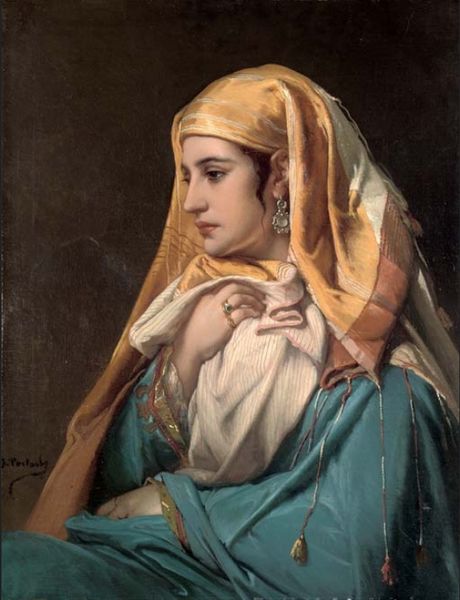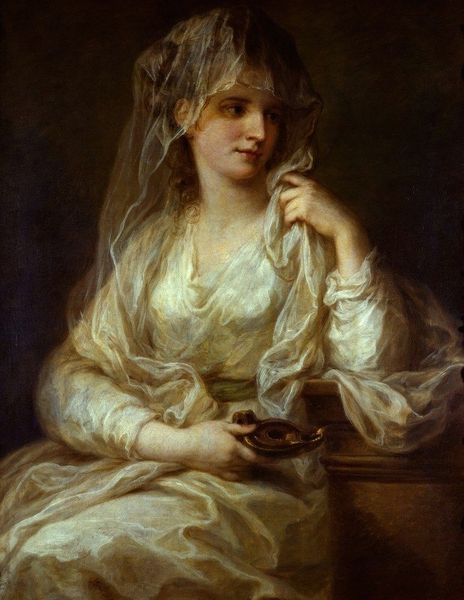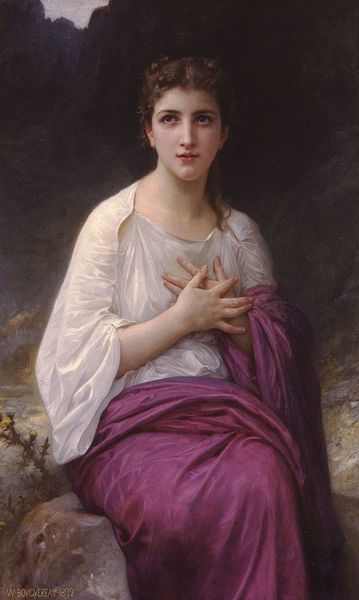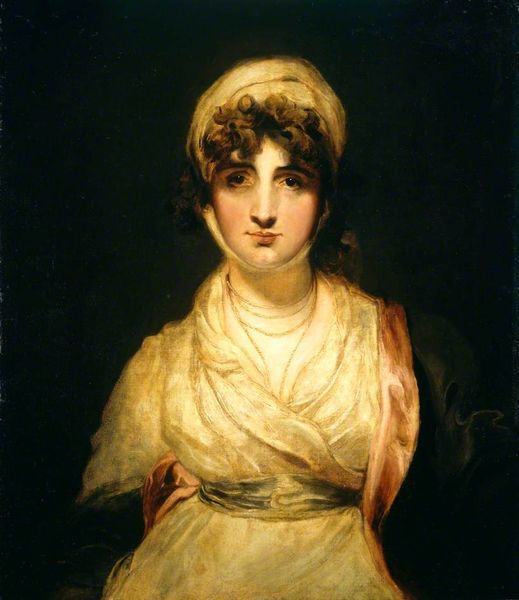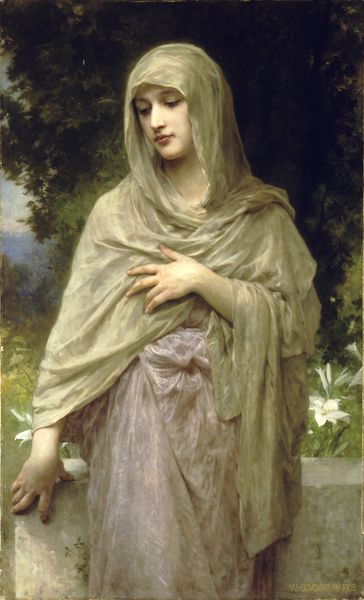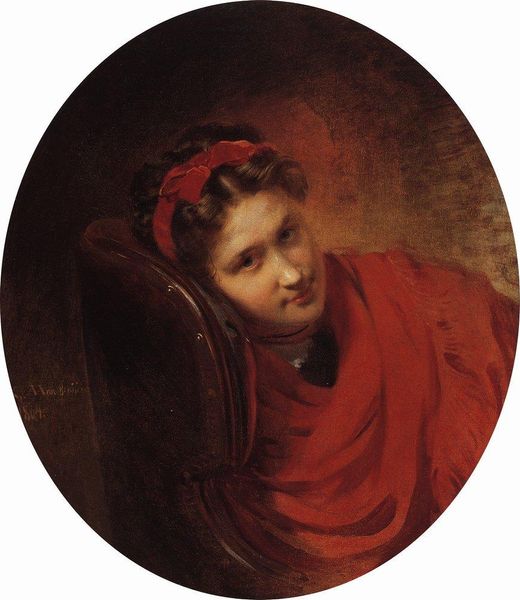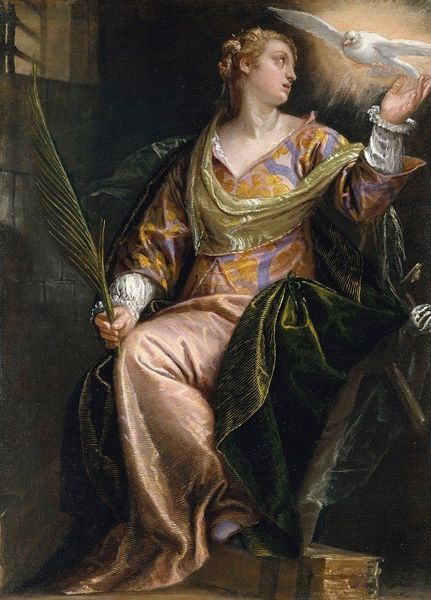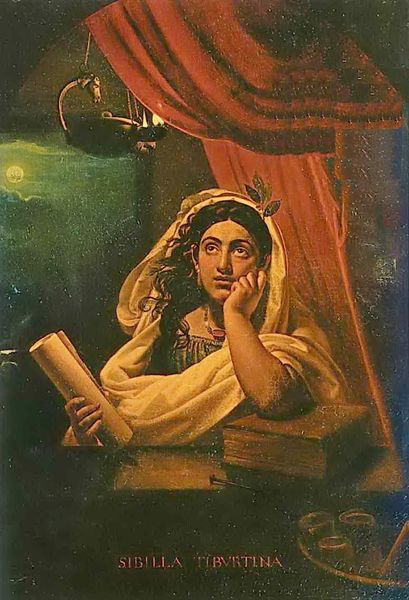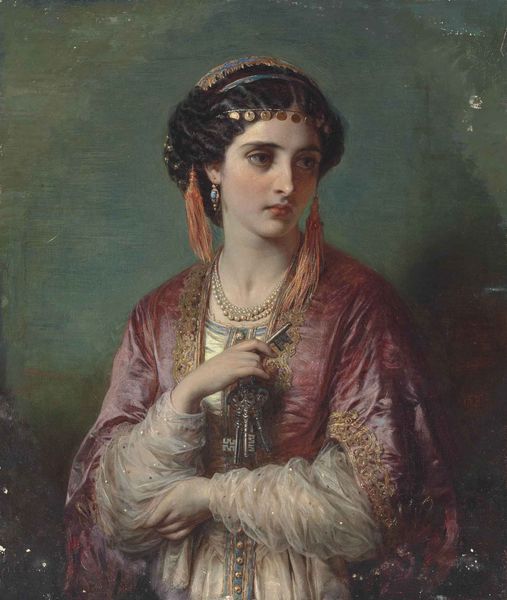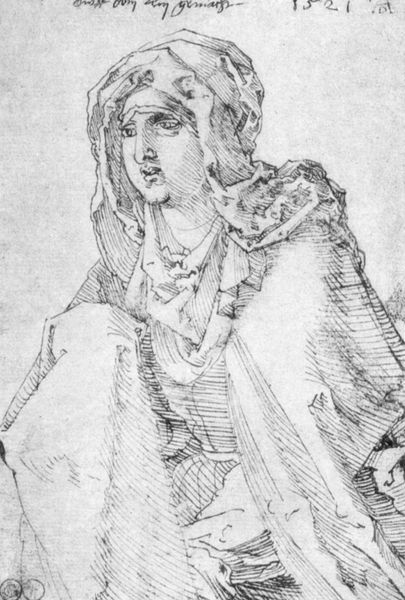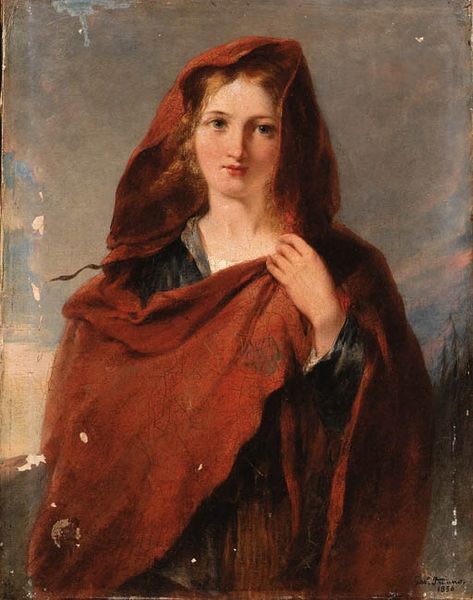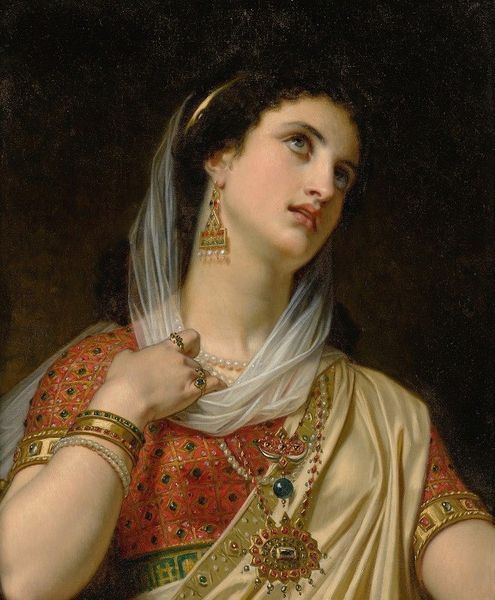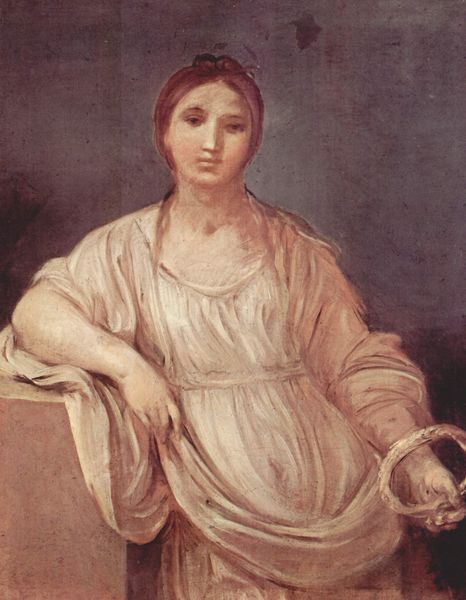
Dimensions: 102.5 x 128.2 cm
Copyright: Public domain
Editor: This is Thomas Francis Dicksee's *Ideal Portrait of Lady Macbeth* from 1870, an oil painting that hangs here at the Walker Art Gallery. She looks pensive...brooding almost. Her gaze is intense and fixed, yet the colour palette gives it a sense of elegance. What exactly am I looking at? Curator: What *are* you looking at! Beyond a compelling portrait, of course. Dicksee has captured a pivotal moment – the instant before action, when Lady Macbeth is formulating her... well, let’s just call them ‘ambitious’ plans. That finger resting on her chin isn't just any old gesture, it hints at cold calculation. Don’t you get the sense that behind her beauty, chaos might come calling? Editor: Chaos, absolutely! She's not merely contemplating tea and biscuits, is she? Her eyes… almost devoid of emotion? Curator: Ah, but that’s the thing, isn’t it? Where is the torment that haunts the tragic Lady? Perhaps Dicksee hints that Lady Macbeth didn’t crumble because of guilt, but regret at getting caught? Notice also the classical style which adds an idealistic, Romantic lens through which he imagines her; she's idealized rather than portrayed with the ravages of guilt one might expect. He's creating an appealing rather than off-putting image. Who might hang such a painting? Editor: A different, far more intriguing take! I guess I was expecting a wilder-eyed, tormented depiction. Seeing her almost serene shifts everything. Curator: Shifts the shadows, certainly! Now consider the viewer. Who, surrounded by Victorian sensibilities, might crave to be reminded of such a strong woman? Or at least, the strength to challenge authority, for better or for worse! Editor: Right! So much for a simple portrait! It’s about Victorian values as much as Shakespeare, now that I look at it again. Curator: Exactly! And sometimes, the best stories are the ones we tell ourselves, based on what we think we see!
Comments
No comments
Be the first to comment and join the conversation on the ultimate creative platform.
